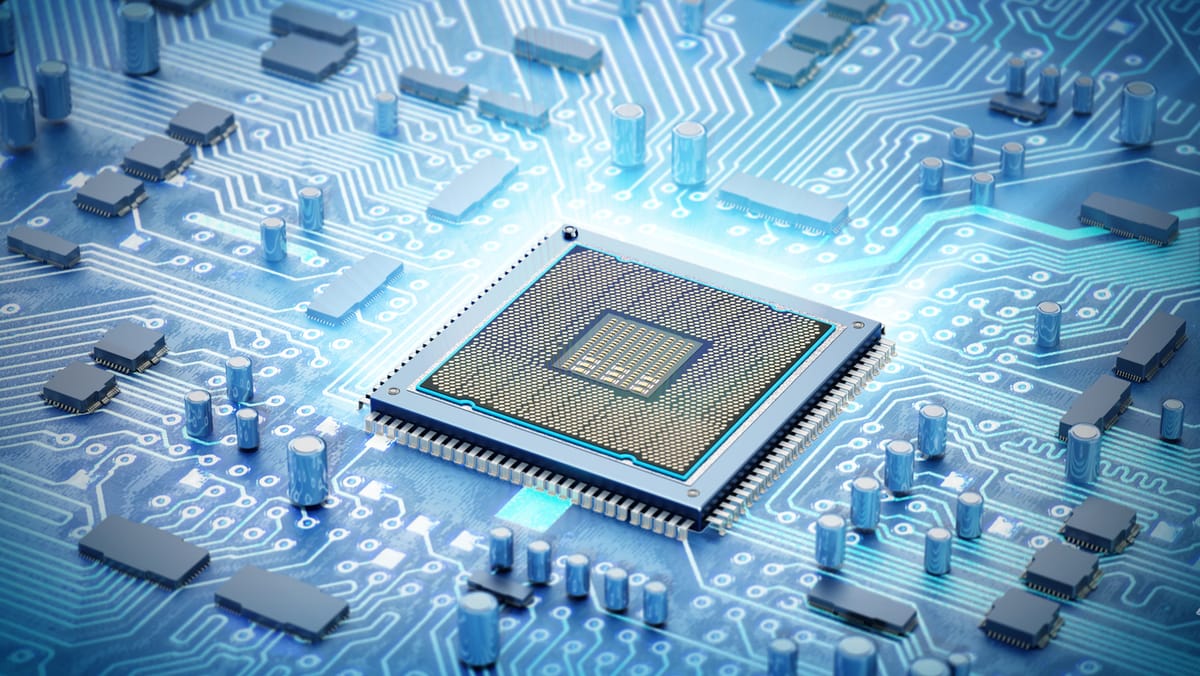Semiconductor Guide
The GINC's guide to Semi-Conductors and their role in National Strategy and Capability

Semiconductors are far more than the building blocks of modern electronics—they are the silent enablers of national capability and strategic advancement. In today’s interconnected world, the performance, security, and global influence of a nation increasingly hinge on its mastery of semiconductor technology. From powering smartphones and computers to underpinning critical defense systems, semiconductors are at the heart of both economic growth and national security. Nations that invest in semiconductor research, production, and innovation are not only positioned to reap significant economic rewards but also to bolster their technological sovereignty. As competition intensifies on the global stage, the strategic importance of semiconductors has become a central pillar in national strategy, influencing everything from trade policies to defense planning.
Definitions and Fundamentals
At its core, a semiconductor is a material whose electrical conductivity falls between that of a conductor and an insulator. This unique property makes semiconductors ideal for controlling electrical current. Silicon, the most widely used semiconductor material, forms the backbone of integrated circuits, microprocessors, and memory chips found in countless devices. The discovery and subsequent utilization of semiconductors in the mid-20th century spurred the electronics revolution, leading to the rapid development of computers, communication systems, and consumer electronics.
The history of semiconductors is intertwined with significant scientific breakthroughs and industrial advances. Early experiments with semiconductor materials led to the invention of the transistor in 1947—a pivotal moment that set off waves of innovation in electronics. Over the decades, the evolution of semiconductor technology has been marked by exponential increases in processing power and energy efficiency, as epitomized by Moore’s Law. Today, semiconductors not only drive consumer technology but also underpin critical infrastructures such as power grids, transportation systems, and military communications, making them indispensable for national capability.
Contribution to National Capability
Semiconductors contribute to national capability in several distinct ways. Here are five primary areas in which their impact is most profound:
Economic Growth and Job Creation
The semiconductor industry is a major engine of economic growth. It fuels high-tech sectors and provides a foundation for emerging industries such as artificial intelligence, renewable energy, and advanced manufacturing. As nations invest in semiconductor fabrication facilities and research and development, they generate thousands of high-skill jobs and stimulate local economies. The ripple effects extend into numerous sectors—from the design and production of consumer electronics to the creation of cutting-edge medical devices. As the industry continues to expand, the economic multiplier effect enhances competitiveness and positions nations to lead in the global digital economy.
National Security and Defense Applications
In the realm of national security, semiconductors are indispensable. Advanced chips power everything from secure communication networks and surveillance systems to state-of-the-art defense equipment. Military hardware, including drones, satellites, and cyber-defense systems, relies on semiconductor technology for precision, reliability, and efficiency. Moreover, the capability to produce semiconductors domestically ensures that critical defense systems are not vulnerable to external disruptions or supply chain manipulations. This technological independence is vital for maintaining a strategic edge and safeguarding national security interests in an increasingly contested global environment.
Technological Innovation and Competitive Advantage
Semiconductors are at the core of innovation, driving breakthroughs in various fields such as computing, telecommunications, and robotics. By enabling faster processing speeds and more efficient energy consumption, advanced semiconductor technologies create a fertile environment for developing next-generation applications. Countries that lead in semiconductor research and production set the pace for global technological progress, establishing themselves as innovation hubs. This competitive advantage attracts further investment in research and development, fosters partnerships between academia and industry, and helps build an ecosystem that is resilient in the face of rapid technological change.
Infrastructure and Connectivity
Modern society depends on robust digital infrastructure, and semiconductors are the linchpin of this connectivity. From the high-speed internet that links cities and rural areas to the sensor networks that power smart grids and autonomous vehicles, semiconductor-based devices are everywhere. They enable the sophisticated data processing required for the operation of critical public services such as healthcare, transportation, and energy management. As governments around the world invest in digital infrastructure to enhance public safety and improve service delivery, the role of semiconductors becomes even more critical. Their reliability and performance directly affect the efficiency and security of essential services that underpin everyday life.
Supply Chain Resilience and Technological Sovereignty
A nation’s ability to maintain a secure and resilient supply chain for semiconductors is directly linked to its technological sovereignty. Disruptions in semiconductor supply chains can have cascading effects on the economy and national security, as seen in recent global shortages. By developing domestic capabilities in semiconductor design, manufacturing, and quality assurance, countries can reduce dependence on foreign suppliers and mitigate risks associated with geopolitical tensions. A robust domestic semiconductor industry also serves as a catalyst for building strategic alliances and trade relationships that further enhance national capability. In an era where technological disruptions can have far-reaching consequences, maintaining control over semiconductor supply chains is a strategic imperative.
Challenges and Future Trends
Despite their critical importance, the semiconductor industry faces several challenges that could affect national capability. One major issue is the escalating complexity and cost of semiconductor manufacturing. As technology nodes shrink and demand for more powerful chips increases, the capital required for state-of-the-art fabrication facilities rises exponentially. This creates barriers to entry, concentrating production in a few regions and increasing vulnerability to supply chain disruptions.
Geopolitical tensions also pose a significant challenge. With the semiconductor supply chain being highly globalized, trade disputes and export restrictions can disrupt production and limit access to key technologies. Nations are increasingly aware of the risks associated with depending on foreign suppliers for critical components, and this has led to a push for greater self-sufficiency. However, achieving this balance is complex, given the collaborative nature of semiconductor research and the global division of labor in manufacturing and design.
Environmental concerns are another challenge. The production of semiconductors is resource-intensive, involving large amounts of water, chemicals, and energy. As environmental regulations become more stringent worldwide, semiconductor manufacturers are under pressure to adopt greener practices without compromising efficiency and output. Balancing environmental sustainability with rapid technological advancement is a delicate challenge that will shape the future of the industry.
Looking ahead, future innovations and trends promise to reshape the landscape of semiconductor technology. One of the most exciting developments is the advent of quantum computing and neuromorphic chips. These technologies, which mimic the human brain’s neural structure, have the potential to revolutionize computing by handling complex, data-intensive tasks far more efficiently than traditional silicon-based chips. As research in these areas accelerates, we may witness breakthroughs that redefine what semiconductors can do.
In addition, advancements in materials science could lead to the discovery of new semiconductor materials that outperform silicon in terms of speed, efficiency, and thermal management. Graphene, for example, has shown tremendous promise due to its remarkable electrical and mechanical properties. While commercial applications of graphene-based semiconductors are still in the early stages, continued investment in this area could yield transformative results.
Artificial intelligence (AI) and machine learning are also poised to drive significant changes in semiconductor design and manufacturing. By harnessing AI for process optimization, quality control, and predictive maintenance, semiconductor fabs can enhance yield and reduce costs. Moreover, the integration of AI into chip architecture is expected to lead to smarter, more adaptive devices capable of handling complex tasks in real time.
Finally, the push toward decentralized and localized production capabilities will likely shape future policy and investment strategies. Governments around the world are exploring initiatives to build domestic semiconductor industries, recognizing that technological sovereignty is a cornerstone of national security. These efforts may include public-private partnerships, increased research funding, and incentives for innovation that aim to create a more resilient and diversified supply chain.
In conclusion, semiconductors are not just essential components of modern technology; they are strategic assets that underpin economic growth, national security, and technological innovation. As nations navigate the challenges of a rapidly evolving global landscape, investing in semiconductor technology will be critical to maintaining competitive advantage and ensuring a secure, prosperous future.





